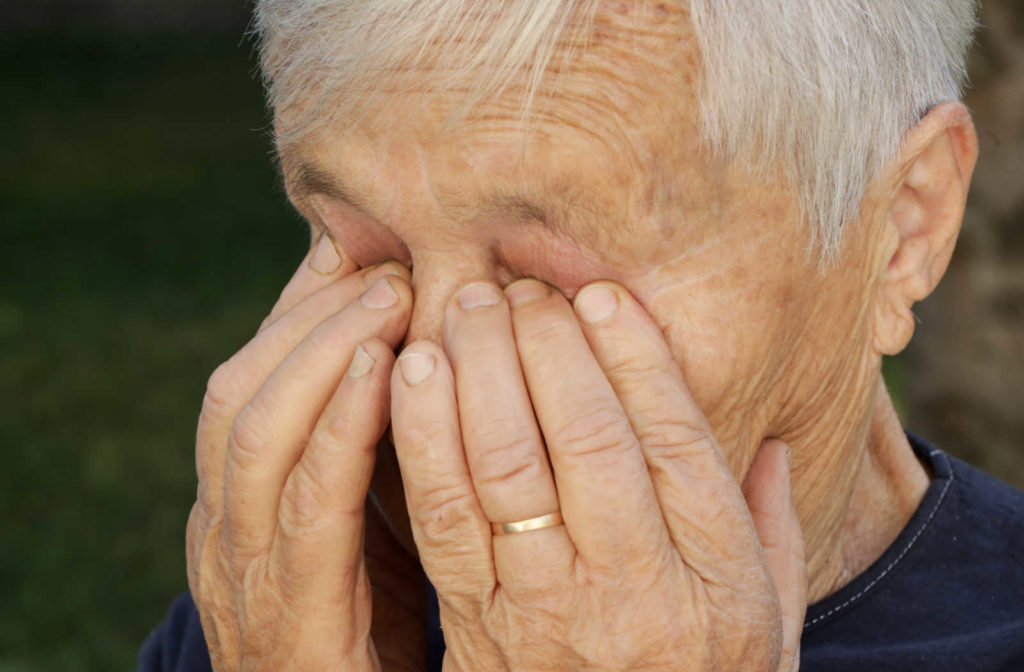Dry eye disease is a condition that occurs when the eye doesn’t produce enough tears or good quality tears to lubricate the eye. Around 30% of Canadians experience symptoms associated with dry eye.
Symptoms aren’t hard to miss—itchiness, redness, burning, and light sensitivity. Besides the discomfort of these symptoms, dry eye disease can cause unclear vision or blurriness.
Eye exams can help assess vision changes from dry eye disease and provide treatment options. Finding relief from symptoms usually depends on understanding dry eye disease and its underlying causes.
What Is Dry Eye Disease?
Tears play a crucial role in providing clear and comfortable vision. With insufficient tears or an imbalance in the tear film, which is made of water, mucin, and oil, the eye’s surface is drier than usual, or tears evaporate more quickly.
Without adequate lubrication on the eye’s surface, you can experience unpleasant symptoms, such as:
- Redness
- Itchy and irritated eyes
- Burning or stinging sensation
- Eye pain
- Scratchy or gritty feeling in your eyes
- Light sensitivity
- Watery eyes
- Stringy mucous in and around your eyes
- Blurred Vision
- Difficulty wearing contact lenses
Causes of Dry Eye Disease
There are several factors that lead to reduced moisture in the eyes. These can affect the production and evaporation of tears.
Causes of Decreased Tear Production
- Age—the quantity of tears decreases as you age.
- Certain medical conditions—autoimmune conditions such as Sjögren’s syndrome, lupus, and rheumatoid arthritis. Other disorders include diabetes and thyroid conditions.
- Certain medicines—antihistamines, decongestants, antidepressants, hormone replacement therapy, diuretics, and blood pressure medication.
- Contact lens wear—you are more at risk if you wear contact lenses.
Causes of Increased Tear Evaporation
- Meibomian gland dysfunction—small glands on the edge of your eyelids that produce oil become clogged.
- Infrequent blinking—caused by digital eye strain.
- Eyelid problems—lids turning outward (ectropion) and the lids turning inward (entropion).
- Eye allergies
- Environmental factors—wind, smoke, or dry air
- Vitamin A deficiency

Dry Eyes & Blurriness
The function of tears is to lubricate the eye, protect the eye, and keep the eye’s surface smooth. With a smooth eye surface, light can refract the right way when it enters.
In dry eye disease, the eye’s surface lacks tears causing a rough surface. When light enters the eye, the rough surface disrupts the eye’s ability to refract light, and it bounces in many directions.
It can sound contradictory, but excess watering of the eyes in dry eye disease can also cause blurriness. Your eyes overcompensate for the dryness by secreting more tears.
These tears lack the proper composition leading to drier eyes and more irritation. In response, the eyes secretion more poor-quality tears, and the cycle continues, leading to blurry vision.
Treatment for Dry Eyes
Treatment for dry eyes can depend on the severity and the underlying cause and can include over-the-counter and prescription medication.
Artificial tears
These can be purchased over the counter as eye drops, gels or ointments. Preservative-free artificial tears help lubricate the eye’s surface.
Medicated Eye Drops
Your eye doctor can prescribe medicated eye drops to treat inflammation based on the severity of your dry eye disease. Treatment with these can be short or long-term and should be used as instructed by your eye doctor.
Punctal Plugs
Punctal plugs are small semi-permanent plugs placed at the entry of the tear duct to reduce the outflow of tears. They are usually used when other forms of treatment are no longer effective, such as eye drops.
Lifestyle Changes
If the environment is the cause of your dry eyes, you can use a humidifier or avoid air conditioning. Other changes can include reducing screen time, blinking frequently, and drinking more water.
When to See Your Eye Doctor
Regular visits to your eye doctor, incorporating lifestyle changes, and getting treatment are usually effective methods for dry eye relief. However, if you experience the following symptoms, contact your eye doctor immediately:
- Decreased vision
- Double vision
- Headache, nausea, or fever, along with eye pain and blurry vision
Dry Eye Relief
Untreated dry eye disease and chronic dry eyes can lead to severe discomfort and impaired or blurry vision. Dry eye therapy at Calgary Optometry Centre can help restore healthy tears for more comfortable and clear vision.
Book an appointment to learn more about dry eye relief and our treatment options.




